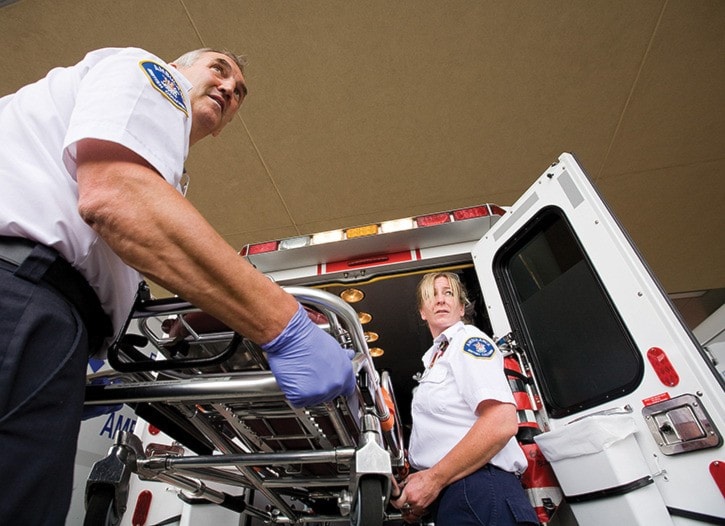B.C. Ambulance Service in Greater Victoria will next month change the way paramedics are deployed to emergencies throughout the city.
But BCAS assures residents there won't be negative impacts to response times when residents call 911.
While paramedics currently start their shifts at one of the seven community-based satellite ambulance stations, come May 22 employees begin their day at a central depot on Douglas Street.
"By being more flexible with our resources and being able to move (paramedics and ambulances) effectively, our goal is to improve our ability to respond to incidents," said Grant Brilz, BCAS district manager for Greater Victoria.
Paramedics will still be sent out to the satellite locations, but which municipality they wind up in could change day-to-day, depending on where the greatest need is. Brilz said, however, there will never be a community that isn't being served.
"This is one way we are able to change our model in a way that doesn't impact patient care and has a strong potential to improve response time," he said. "Our goal is to provide the best service to the public with the resources we have available."
Bronwyn Barter, president of Ambulance Paramedics of B.C., the union representing all paramedics in the province, commends the deployment model – in theory, but says the union is too understaffed in Greater Victoria to make the change effective.
"Ultimately if you're not going to increase the amount of paramedics or ambulances that you have, it's not going to improve the response times and patient care," she said. "We don't see this as an improvement to resource allocation or response time."
The union and BCAS are currently in arbitration discussing the changed deployment model, Barter said.
Among the topics still of concern to the union is paramedics regularly need to change their uniforms throughout the day, after coming into contact with hazardous materials. With no home base in a community anymore and the potential to start the day deployed at one station and get moved around throughout the shift, spare clean uniforms will have to be carried in the ambulance.
Where Brilz said there will be efficiencies is right now paramedics are required to stock and clean their own vehicles. Under the new model, the ambulances will be in a "ready state" right at the start of shift.
The deployment model switch is the first step in a transition for BCAS. The next step entails a detailed look at existing satellite locations, and whether they are optimally located to respond for service.
"There's no plans to close any stations. We need those (satellite) locations to be able to respond from," Brilz said.
There are currently 110 full-time and 35 part-time paramedics working in Greater Victoria. At its peak during the day, BCAS has 14 ambulances on shift.
"This creates no impact for the municipalities or the public. We will continue to have ambulance service in these areas and those communities."
kslavin@saanichnews.com
